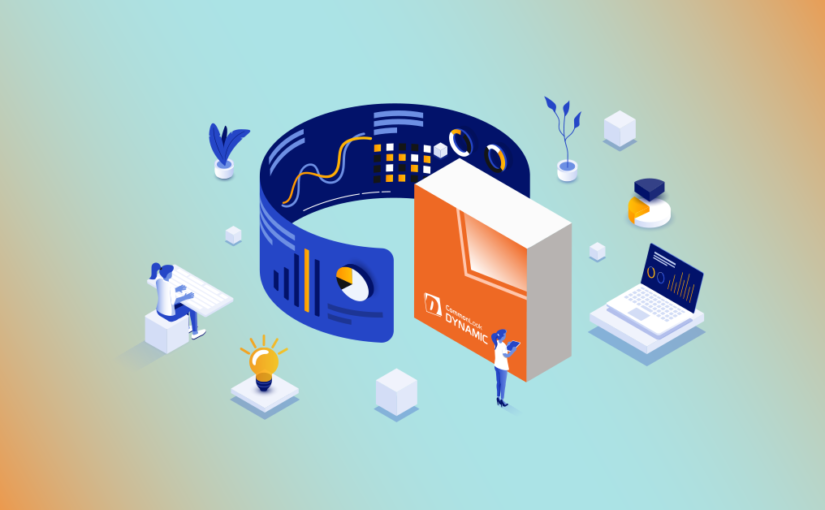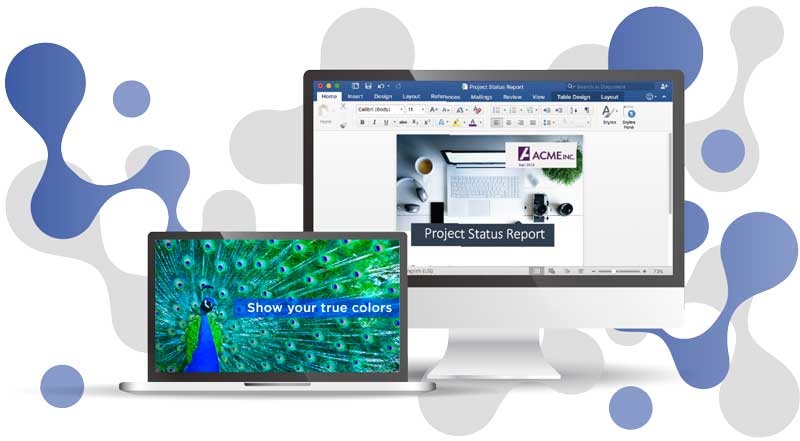When Brisbane-based mining services company Apex Resources entered acquisition talks with a multinational conglomerate, their meticulously prepared virtual data room became the deal’s differentiator. Within 48 hours of granting access, the acquirer’s due diligence team had everything they needed to accelerate negotiations. The transaction closed 40% faster than industry averages, with a 15% premium above initial offers.
The contrast couldn’t be starker with similar-sized peer Meridian Engineering, whose chaotic data room organisation led to a six-month delay, three separate document requests, and ultimately a 25% reduction in valuation. Same industry, similar financials, but vastly different outcomes based on one critical factor: data room preparation.
Successful dealmakers heavily rely on dedicated M&A technology such as virtual data rooms when conducting due diligence, but the technology alone doesn’t guarantee success. The strategic organisation and completeness of your document collection determines whether your data room accelerates or derails transactions.
For Australian business owners navigating M&A, fundraising, or strategic partnerships, understanding exactly what documents to include—and how to organise them—can mean the difference between premium valuations and costly delays.
The Strategic Psychology of Data Room Organisation
Due diligence represents more than document review—it’s a negotiation tool that shapes buyer perception and deal dynamics. Professional investors and acquirers form impressions within hours of data room access, and these initial assessments influence everything from valuation multiples to deal structure.
🔹 Insight from M&A Advisors: “A well-organised data room signals operational excellence and management competence. Buyers subconsciously assume that companies managing their data rooms professionally will manage their operations with similar precision.” – Australian M&A Market Report 2024
The psychological impact begins before documents are reviewed. Clean folder structures, intuitive navigation, and comprehensive document coverage create confidence that accelerates negotiations. Conversely, missing documents, poor organisation, or obvious gaps trigger skepticism that can derail even strong opportunities.
The Buyer’s Perspective: What They’re Really Looking For
Experienced acquirers approach data rooms with specific objectives beyond surface-level document review:
Risk Identification – Scanning for potential deal-breakers or hidden liabilities Value Verification – Confirming financial performance and growth projections Integration Planning – Assessing operational complexity and cultural fit Negotiation Ammunition – Identifying leverage points for price adjustments
Understanding these motivations helps business owners prepare data rooms that address concerns proactively rather than reactively.
The Master Document Framework: Beyond Basic Compliance
Comprehensive data room preparation requires systematic thinking about what buyers need to know, when they need to know it, and how to present information most effectively.
Phase 1: Corporate Foundation Documents
Corporate Structure and Governance
- Articles of incorporation and company constitution
- Board resolutions and shareholder agreements
- Corporate organisational charts with ownership percentages
- Minutes from board and shareholder meetings (last 24 months)
- Powers of attorney and delegation authorities
🔹 Table: Corporate Documentation Priorities
| Document Type | Critical Level | Typical Buyer Timeline |
|---|---|---|
| Corporate constitution | Essential | Day 1-2 |
| Board resolutions | Essential | Day 1-3 |
| Shareholder agreements | Essential | Day 2-4 |
| Meeting minutes | Important | Week 1 |
| Organisational charts | Essential | Day 1 |
Regulatory and Compliance Records
- Business registration certificates and renewals
- Industry-specific licenses and permits
- ASIC compliance documentation
- Tax registration certificates (ABN, GST, state taxes)
- Professional memberships and certifications
For Australian businesses, regulatory compliance documentation requires particular attention to:
- ACCC approvals for businesses in regulated industries
- APRA licensing for financial services companies
- State-specific permits varying by jurisdiction and industry
- Environmental approvals particularly relevant for resources and manufacturing
Phase 2: Financial Performance Deep Dive
Core Financial Statements
- Audited financial statements (minimum 3 years, preferably 5)
- Management accounts and monthly financials (last 24 months)
- Cash flow statements and projections
- Tax returns and notices of assessment
- Depreciation schedules and asset registers
🔹 What Others Missed: Many businesses provide financial statements without supporting documentation that explains variations or one-time events. Include management commentary explaining unusual items, seasonal variations, or strategic investments that impact financial presentation.
Detailed Financial Analysis
- Revenue analysis by product/service, geography, and customer segment
- Cost breakdowns with supplier concentration analysis
- Working capital analysis and seasonal patterns
- Capital expenditure history and future requirements
- Debt schedules, loan agreements, and banking relationships
Phase 3: Operational Excellence Documentation
Technology and Systems
- IT infrastructure documentation and system architecture
- Software licenses and technology agreements
- Data security policies and breach incident reports
- Cybersecurity assessments and penetration testing results
- Disaster recovery and business continuity plans
🔹 Case Study Snapshot: Adelaide-based software company TechFlow’s data room included comprehensive cybersecurity documentation that became a key differentiator during acquisition negotiations. Their ISO 27001 certification and detailed security protocols enabled a 20% valuation premium as buyers recognized reduced integration risk.
Human Resources and Culture
- Organisational charts with reporting relationships
- Employee contracts and handbook policies
- Compensation and benefits structures
- Performance management systems
- Employee satisfaction surveys and retention data
Phase 4: Commercial and Strategic Assets
Customer and Market Intelligence
- Customer concentration analysis and retention rates
- Sales pipeline and forecasting methodologies
- Market research and competitive positioning studies
- Customer satisfaction surveys and Net Promoter Scores
- Key customer contracts and terms analysis
Intellectual Property Portfolio
- Patent registrations and applications
- Trademark and copyright documentation
- Trade secrets and confidentiality agreements
- IP licensing agreements and royalty structures
- R&D documentation and innovation pipeline
🔹 Quote from IP Specialists: “Intellectual property documentation often makes or breaks technology acquisitions. Buyers need clear evidence of ownership, protection strategies, and commercial application potential.” – Australian IP Law Review 2024
The Australian Compliance Layer: Regulatory Considerations
Australian businesses face unique regulatory requirements that international buyers may not fully understand. Proactive documentation addressing these requirements can accelerate due diligence and prevent costly delays.
Corporations Act Compliance
Director and Officer Documentation
- Director appointment and resignation records
- Officer insurance policies and coverage details
- Related party transaction disclosures
- Conflict of interest policies and declarations
- Continuous disclosure compliance records
Shareholder and Securities Compliance
- Share register and transfer documentation
- Securities transaction records and ASIC filings
- Dividend policy and payment history
- Share option and employee share schemes
- Compliance with ASX listing rules (if applicable)
Industry-Specific Regulatory Requirements
Financial Services (APRA/ASIC Regulated)
- Australian Financial Services License documentation
- Responsible lending compliance records
- Anti-money laundering and counter-terrorism financing policies
- Privacy Act compliance and data handling procedures
- Financial claims scheme participation records
Resources and Mining (State and Federal)
- Mining leases and exploration permits
- Environmental impact assessments and monitoring
- Native title agreements and community consultation
- Rehabilitation bonds and environmental liabilities
- Resource reserve valuations and competent person reports
Technology Platform Selection: Why iDeals Excels
The success of comprehensive due diligence preparation depends heavily on your virtual data room platform’s capabilities. Leading providers like iDeals offer features specifically designed to handle complex document sets efficiently.
Advanced Organisation Features
iDeals provides sophisticated folder structures and indexing capabilities that support comprehensive document organisation:
- Customizable folder hierarchies accommodating complex corporate structures
- Advanced search functionality enabling rapid document location
- Document versioning tracking changes and updates throughout the process
- Automated indexing reducing manual organisation overhead
Major clients including KPMG, BNP Paribas, and Ernst & Young choose iDeals specifically for its ability to handle large-scale due diligence processes efficiently.
Australian-Specific Advantages
For Australian businesses, iDeals offers particular benefits:
- Local data residency ensuring compliance with Australian privacy laws
- Multi-timezone support accommodating international buyer teams
- Currency display options supporting Australian dollar presentations
- Regulatory template libraries including Australian-specific document categories
🔹 Insight from Transaction Advisors: iDeals’ granular permission settings allow sellers to control document access strategically, revealing information progressively as negotiations advance. This capability proves particularly valuable in competitive auction processes.
The Sequencing Strategy: Controlling Information Flow
Successful data room management involves more than document inclusion—it requires strategic thinking about information sequencing and access control.
Tier 1: Initial Access Documents
Management Presentation and Executive Summary
- Company overview and value proposition
- Financial highlights and key metrics
- Management team biographies and track records
- Market position and competitive advantages
- Strategic growth initiatives and opportunities
High-Level Financial Overview
- Summary financial statements (3-5 years)
- Key performance indicators and benchmarks
- Revenue and profitability trends
- Cash generation and working capital patterns
- Capital structure and debt capacity
Tier 2: Detailed Due Diligence Materials
Comprehensive Financial Documentation
- Complete audited financial statements with notes
- Management accounts and monthly reporting packages
- Detailed revenue and cost analysis
- Working capital and cash flow modeling
- Budget and forecast documentation with assumptions
Operational Deep Dive
- Detailed organisational charts and role descriptions
- Customer analysis and concentration studies
- Supplier relationships and dependency assessments
- Technology infrastructure and IT policies
- Quality management and certification records
Tier 3: Sensitive and Strategic Information
Confidential Commercial Intelligence
- Strategic planning documents and board presentations
- Competitive analysis and market intelligence
- Customer pricing strategies and contract negotiations
- R&D pipeline and innovation roadmaps
- Acquisition targets and partnership opportunities
Legal and Regulatory Sensitive Materials
- Material contracts and agreements
- Litigation history and outstanding legal matters
- Insurance policies and claims history
- Regulatory correspondence and compliance issues
- Environmental liabilities and remediation plans
Common Pitfalls: What Derails Otherwise Strong Processes
Even well-prepared data rooms can fail due to preventable mistakes that experienced buyers immediately recognise.
The Completeness Trap
Incomplete Document Sets Many sellers provide 80% of requested documents, assuming buyers won’t notice gaps. Professional acquirers systematically identify missing materials and interpret gaps as potential red flags.
Outdated Information Providing historical documents without current updates creates skepticism about operational controls and financial reporting accuracy.
Inconsistent Data When financial projections don’t align with historical performance or market analysis contradicts financial forecasts, buyers question management credibility.
The Organisation Disaster
Poor Folder Structure Illogical organisation forces buyers to spend excessive time locating documents, creating negative impressions about management capabilities.
Unclear Document Naming Cryptic file names or inconsistent naming conventions suggest poor operational systems and create unnecessary friction.
Missing Context Documents without explanatory context or supporting analysis force buyers to make assumptions, often negative ones.
🔹 What Others Missed: The most common mistake is treating data room preparation as a document dump rather than a strategic communication tool. Successful sellers use data rooms to tell their company’s story systematically and persuasively.
The Technology Integration Advantage
Modern due diligence requires integration between data rooms and other business systems to maintain accuracy and efficiency throughout the process.
Real-Time Data Synchronisation
Leading platforms like iDeals offer integration capabilities that ensure data room contents remain current:
- Financial system integration automatically updating financial statements
- CRM synchronisation maintaining current customer data
- Document management integration ensuring version control
- Reporting dashboard integration providing real-time analytics
Analytics and Tracking
Advanced data room platforms provide seller-side analytics that inform negotiation strategies:
- User activity tracking showing buyer engagement levels
- Document interest analysis identifying areas of concern or opportunity
- Time-spent metrics indicating buyer priorities and decision-making progress
- Question pattern analysis revealing potential negotiation points
For comprehensive analysis of platform capabilities and provider comparisons, resources like https://dataroom-online.org/ offer detailed feature analysis and user reviews.
The ROI of Professional Preparation
Comprehensive data room preparation requires significant upfront investment in time, resources, and often professional services. Understanding the return on this investment helps business owners make informed decisions about preparation thoroughness.
Quantifiable Benefits
Transaction Speed Acceleration
- Well-prepared data rooms reduce due diligence timelines by 30-50%
- Faster processes reduce execution risk and market timing exposure
- Reduced legal and advisory fees through efficient information sharing
Valuation Premium Capture
- Professional presentation suggests operational excellence
- Comprehensive documentation reduces buyer risk perceptions
- Reduced due diligence costs often translate to higher offers
Negotiation Position Strength
- Complete information prevents last-minute price adjustments
- Professional presentation creates buyer confidence
- Systematic organisation demonstrates management competence
Risk Mitigation Value
Reduced Deal Failure Risk
- Comprehensive documentation prevents surprise discoveries
- Professional presentation maintains buyer confidence
- Systematic approach reduces due diligence delays
Legal Protection
- Complete disclosure documentation provides litigation protection
- Professional organisation demonstrates good faith dealing
- Comprehensive records support warranty and indemnity positions
The Australian M&A Context: Market-Specific Considerations
Australian M&A markets operate with unique characteristics that influence data room preparation strategies.
Regulatory Environment Impact
Foreign Investment Review Board (FIRB) Considerations
- FIRB application documentation and approval status
- Sensitivity analysis for foreign investment thresholds
- National security implications and mitigation strategies
- Timing coordination between due diligence and regulatory approvals
Competition and Consumer Act Implications
- Market concentration analysis and competitive impacts
- ACCC notification requirements and informal clearance processes
- Merger simulation studies and economic analysis
- Customer and supplier impact assessments
Market Dynamics and Buyer Expectations
International Buyer Considerations
- Currency hedging and exchange rate impact analysis
- Transfer pricing documentation and international tax implications
- Regulatory compliance in multiple jurisdictions
- Cross-border integration planning and cultural considerations
Domestic Buyer Advantages
- Local market knowledge and regulatory familiarity
- Existing customer and supplier relationships
- Operational synergy identification and quantification
- Integration timeline advantages and cost savings
Advanced Preparation Strategies: Beyond the Basics
Sophisticated sellers implement advanced preparation strategies that differentiate their processes from standard approaches.
Predictive Due Diligence
Anticipating Buyer Questions
- Industry-specific due diligence pattern analysis
- Buyer background research and historical acquisition patterns
- Preparation of responses to likely questions and concerns
- Development of supporting analysis and documentation
Scenario Planning
- Multiple valuation scenarios based on different buyer types
- Integration complexity analysis for various buyer profiles
- Regulatory approval probability assessments
- Market timing sensitivity analysis
Strategic Storytelling Through Documentation
Narrative Development
- Coherent story arc connecting historical performance to future potential
- Strategic positioning that addresses buyer growth objectives
- Risk mitigation strategies that address buyer concerns
- Value creation opportunities aligned with buyer capabilities
Supporting Evidence
- Independent market research validating growth assumptions
- Customer testimonials and satisfaction documentation
- Competitive analysis highlighting sustainable advantages
- Management track record demonstrating execution capabilities
The Bottom Line: Preparation as Competitive Advantage
In Australia’s competitive M&A environment, comprehensive data room preparation represents more than operational necessity—it’s strategic advantage that can determine transaction success.
The businesses achieving premium valuations and accelerated timelines aren’t necessarily those with the best financial performance, but those presenting their stories most effectively through systematic, professional data room organisation.
Data rooms for due diligence serve as the primary interface between sellers and buyers during the most critical phase of transaction negotiations. Every document, every folder structure, every missing piece of information influences buyer perceptions and, ultimately, deal outcomes.
🔹 Strategic Insight: The most successful Australian business exits result from treating data room preparation as a strategic marketing exercise rather than a compliance requirement. Your data room becomes your company’s most important sales tool—invest in it accordingly.
Premium platforms like iDeals provide the technology foundation for professional presentation, but the real differentiator lies in the strategic thinking behind document selection, organisation, and sequencing. In a market where deals are won and lost on details, comprehensive preparation isn’t optional—it’s the price of entry for serious transactions.
Your competitors are already preparing their data rooms for their next strategic opportunity. The question isn’t whether you can afford to prepare comprehensively—it’s whether you can afford not to when your most important transaction depends on it.





